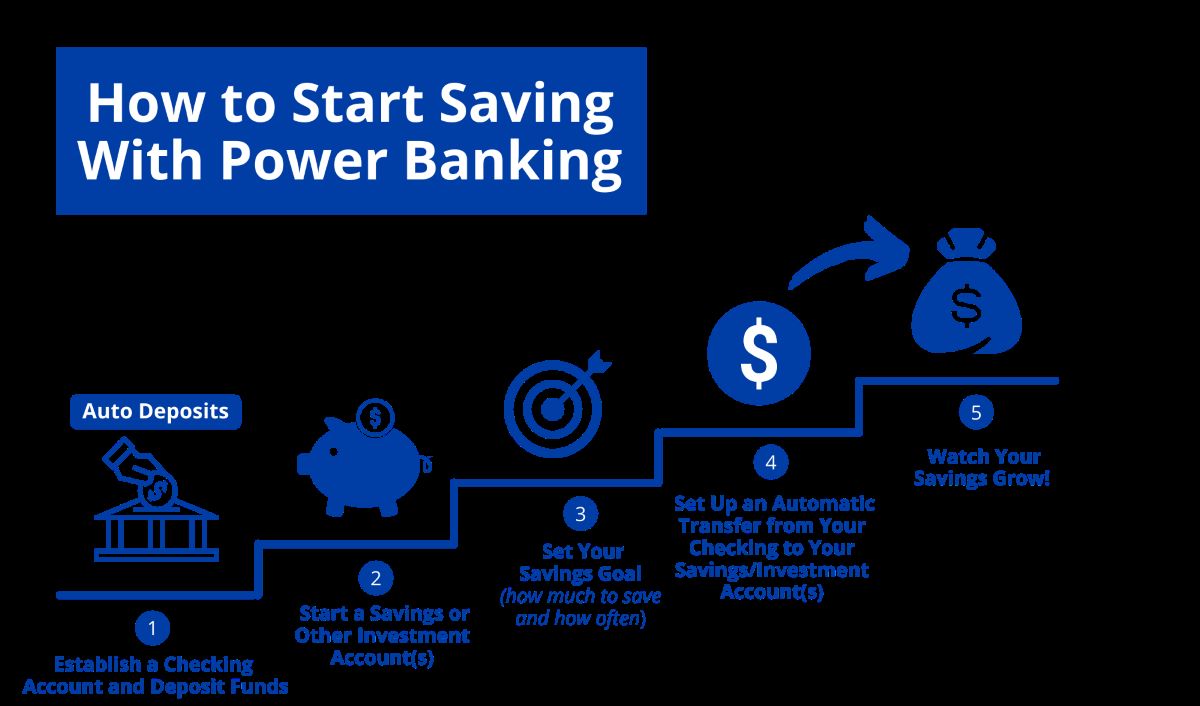

Finance
What Is Power Hour In Stocks
Published: January 18, 2024
Discover the concept of Power Hour in stocks and how it influences the finance industry. Explore the significance and strategies for maximizing profits during this intense trading period.
(Many of the links in this article redirect to a specific reviewed product. Your purchase of these products through affiliate links helps to generate commission for LiveWell, at no extra cost. Learn more)
Table of Contents
Introduction
When it comes to the stock market, timing is everything. Knowing when to buy and sell can make a significant difference in your investment returns. One time period that experienced traders pay close attention to is the final hour of trading, known as the “Power Hour.” This hour, typically occurring between 3:00 p.m. and 4:00 p.m. Eastern Standard Time, is notorious for its potential to create significant market movement and opportunity.
During Power Hour, we observe heightened trading activity and increased volatility. This is due to a combination of factors, including the release of market news, the execution of last-minute trades, and the influence of institutional investors adjusting their positions before the market closes for the day. These elements often create a frenzy of buying and selling, making Power Hour an exciting and potentially lucrative time for traders.
The significance of Power Hour lies in its ability to provide traders with a final opportunity to take advantage of market changes. It allows investors to react to news events that may have occurred during the trading day or adjust their positions based on the overall market sentiment. The concentrated trading activity during this hour can result in rapid price movements, presenting both opportunities and risks that traders should be prepared for.
Understanding the dynamics of Power Hour and having a strategy in place can give traders an edge in the market. This article will delve into the importance of Power Hour, explore strategies for effective trading during this time, and provide tips to maximize your success. By the end of this article, you will have a solid foundation for leveraging the potential of Power Hour in stocks.
Understanding Power Hour
Power Hour, also known as the final hour of trading, refers to the last hour before the stock market closes for the day. In the United States, this typically occurs between 3:00 p.m. and 4:00 p.m. Eastern Standard Time. During this hour, traders and investors closely monitor the market for potential trading opportunities and to make any final adjustments to their positions.
The increased activity during Power Hour can be attributed to several factors. First, it is a time when significant news announcements, earnings reports, or economic data releases often occur. These events can impact the market and trigger sudden price movements, leading to increased trading volume and volatility.
Furthermore, institutional investors, such as hedge funds and mutual funds, often use Power Hour to make adjustments to their portfolios. These large-scale transactions can influence the market, creating potential opportunities for individual traders to capitalize on these movements.
It’s worth noting that not all days will have the same level of activity during Power Hour. Some days may be relatively calm, while others may exhibit heightened volatility. Understanding market conditions and being able to recognize patterns and trends can help traders assess the potential opportunities and risks during this time.
Power Hour can be particularly appealing to day traders or short-term traders who aim to capitalize on short-lived market fluctuations. The rapid price movements and opportunities for quick profits make this hour enticing for those who actively manage their positions.
However, it’s essential to approach Power Hour with caution. The increased volatility and fast-paced nature of trading during this time bring inherent risks. Traders should carefully assess their risk appetite, employ appropriate risk management strategies, and have a solid understanding of the market before engaging in Power Hour trading.
In the next section, we will explore the importance of Power Hour in stocks and how it can impact your trading decisions.
Importance of Power Hour in Stocks
Power Hour holds great significance for traders and investors in the stock market. It is a time when market dynamics can shift rapidly, presenting both opportunities and risks. Understanding the importance of Power Hour can help traders make informed decisions and potentially maximize their returns. Here are a few reasons why Power Hour is important in stocks:
1. Momentum and Price Movements: Power Hour is known for its potential to create significant momentum and price movements in the market. As the trading day approaches its end, traders and investors try to make any final adjustments to their positions, leading to increased trading volume and volatility. This flurry of activity can result in rapid price changes, offering opportunities for quick profits.
2. Reaction to News Events: Power Hour often coincides with the release of important news, earnings reports, or economic data. These announcements can have a substantial impact on stock prices. Traders closely monitor the market during this hour to react quickly to any news that may affect their positions. This ability to adjust strategies based on current information is crucial for successful trading.
3. Institutional Activity: Institutional investors, such as hedge funds and mutual funds, often make significant portfolio adjustments during Power Hour. Their large-scale transactions can influence stock prices and create opportunities for individual traders. By observing institutional activity during this hour, traders can gain insights into potential market trends and adjust their positions accordingly.
4. Closing Positions and Profit Taking: Power Hour provides traders with a final opportunity to close their positions and realize profits before the market closes for the day. Traders who have reached their target price levels or want to secure their gains often take action during this hour. The concentrated trading activity can present attractive entry or exit points for traders looking to capitalize on these profit-taking opportunities.
5. Psychological Impact: The psychological aspect of Power Hour cannot be underestimated. As the trading day comes to a close, emotions can run high, leading to increased volatility and erratic price movements. Traders need to be aware of the psychological factors at play and exercise disciplined trading strategies to navigate through potential market frenzy.
In summary, Power Hour plays a crucial role in the stock market by offering traders a concentrated period of heightened activity, price movements, and potential opportunities. By understanding and leveraging this hour effectively, traders can enhance their chances of success and capitalize on market fluctuations.
Next, we will explore strategies for successful Power Hour trading.
Strategies for Power Hour Trading
Power Hour trading requires a strategic approach to navigate the increased volatility and maximize potential profits. Here are some effective strategies that traders can consider when trading during this crucial hour:
- News-based Trading: Stay updated with market news and be aware of any significant announcements or events scheduled during Power Hour. Reacting swiftly to news releases can provide opportunities for quick profits. Keep an eye on earnings reports, economic data releases, or company-specific news that may impact stock prices.
- Momentum Trading: Take advantage of the increased trading activity and momentum during Power Hour. Identify stocks that are experiencing significant price movements and have high trading volume. Look for stocks that are breaking out of consolidation patterns or nearing key support or resistance levels. Implement momentum-based trading strategies, such as breakout or trend-following strategies, to ride the wave of momentum.
- Technical Analysis: Utilize technical analysis tools to identify potential entry and exit points during Power Hour. Look for chart patterns, such as triangles, head and shoulders, or flags, that may indicate potential price reversals or continuation. Combine technical indicators, such as moving averages, volume, or relative strength index (RSI), to validate your trading decisions and increase the probability of success.
- Volatility Trading: Focus on stocks that exhibit high volatility during Power Hour. Volatile stocks can experience significant price swings, providing opportunities for profits. Look for stocks with a wide daily trading range and high beta values. Implement strategies such as trading breakouts, trading price reversals, or using options to take advantage of the increased volatility.
- Trade with the Trend: Identify the prevailing market trend and align your trades with it. Trading in the direction of the overall market trend increases the probability of success. Use technical analysis tools to confirm the trend and look for opportunities to enter trades in line with the prevailing market direction. However, be cautious of sudden reversals or countertrend moves that may occur during Power Hour.
It’s important to note that no strategy guarantees success in trading. Each trader should develop their own trading plan based on their risk tolerance, experience, and market knowledge. It’s recommended to practice these strategies in a demo or paper trading environment to gain familiarity before implementing them with real money.
In the following section, we will provide essential tips for successful Power Hour trading to further enhance your trading skills.
Tips for Successful Power Hour Trading
Power Hour trading can be fast-paced and challenging, but with the right approach and mindset, it can also be highly rewarding. Here are some tips to help you navigate Power Hour and increase your chances of successful trading:
- Prepare in Advance: Before Power Hour begins, conduct thorough research and prepare a watchlist of stocks that you’re interested in trading. Identify key support and resistance levels, major news events, and potential catalysts that could impact the stocks on your watchlist.
- Manage Risk: Set clear risk management parameters and adhere to them strictly. Determine your stop-loss levels before entering any trades and be disciplined in cutting losses if the trade goes against you. Never risk more than you are willing to lose in any single trade.
- Stay Calm and Focused: Maintaining a calm and focused mindset is crucial during Power Hour. Emotions can run high, and the market can be volatile. Avoid making impulsive decisions based on fear or greed. Stick to your trading plan and strategy, and avoid chasing stocks that have already made significant moves.
- Use Limit Orders: To maintain control over your trades and avoid slippage, consider using limit orders instead of market orders. This allows you to set a specific price at which you are willing to buy or sell a stock, ensuring you get the desired entry or exit price.
- Monitor Volume and Depth: Pay close attention to trading volume and the depth of the market during Power Hour. Higher trading volume indicates increased interest and can lead to significant price moves. Monitoring the depth allows you to see the current bid and ask prices and assess the liquidity of a stock.
- Keep an Eye on Time: Be aware of the time remaining in Power Hour and avoid getting caught in trades too close to the market close. The last few minutes of trading can experience increased volatility, and it’s important to have enough time to manage your positions before the market closes.
- Learn from Your Trades: Keep a record of your Power Hour trades and review them regularly. Analyze your successes and failures, identify patterns, and refine your strategies accordingly. Continuous learning and improvement are key to becoming a successful Power Hour trader.
Remember, no strategy or tip can guarantee success in trading. It takes practice, experience, and adaptability to navigate the market effectively. Develop a trading style that suits your personality and risk tolerance, and always stay informed about market conditions and news events.
In the next section, we will discuss some common pitfalls to avoid during Power Hour trading.
Common Pitfalls to Avoid During Power Hour
While Power Hour presents exciting trading opportunities, it’s essential to be aware of common pitfalls that can potentially derail your trading success. By identifying and avoiding these pitfalls, you can improve your performance and minimize potential losses. Here are some common pitfalls to watch out for during Power Hour:
- Chasing the Market: One of the most significant pitfalls in Power Hour trading is chasing stocks that have already made substantial price moves. It’s tempting to jump into a trade based on FOMO (fear of missing out), but this can lead to buying at a high price or selling at a low price. Avoid getting caught up in the hype and focus on finding trades with favorable risk-reward ratios.
- Overtrading: Power Hour can be an intense time for traders, and the excitement can lead to overtrading. It’s important to exercise discipline and patience. Avoid taking trades that don’t meet your predefined criteria or entering multiple trades simultaneously. Quality over quantity should be your focus.
- Ignoring Risk Management: Neglecting risk management is a common pitfall that can have a severe impact on your trading account. Always define your risk-reward ratio before entering a trade and set appropriate stop-loss orders to limit potential losses. Don’t let emotions or the urgency of Power Hour trading cloud your judgment when it comes to risk management.
- Lack of Preparation: Trading during Power Hour requires careful preparation. Failing to do your research, identify potential trades, or set clear trading plans can lead to impulsive decisions and poor outcomes. Take the time to analyze the market, identify key levels, and develop a strategy before Power Hour begins.
- Missing Key Information: Power Hour trading can move quickly, and missing out on critical information can be detrimental. Stay updated with market news, earnings reports, and any other relevant events that could impact your trades. Be aware of any sudden changes in market sentiment that may require you to adjust your positions accordingly.
- Excessive Emotion-Based Trading: Power Hour can be emotionally charged, with rapid price movements triggering fear, greed, and impulsiveness. Emotional decision-making can lead to poor trading choices. Stay calm, disciplined, and objective in your decision-making process. Stick to your trading plan and avoid making impulsive trades based on emotional reactions.
Avoiding these common pitfalls requires self-awareness, discipline, and a commitment to continuous learning. Keep a trading journal to reflect on your trades, analyze your mistakes, and make adjustments to your approach as needed.
Lastly, let’s summarize the key points discussed in this article.
Conclusion
Power Hour in stocks, the final hour of trading, offers traders and investors a unique opportunity to take advantage of market movements and potential profits. Understanding the dynamics of Power Hour and having a well-defined trading strategy can significantly enhance your success in the stock market.
During Power Hour, heightened trading activity, increased volatility, and the release of important news events create an environment ripe with potential opportunities. Traders can capitalize on market momentum, react to breaking news, and adjust their positions before the market closes.
To make the most of Power Hour, it is important to adopt effective trading strategies such as news-based trading, momentum trading, technical analysis, volatility trading, and trend following. By implementing these strategies, traders can position themselves to take advantage of market movements and potentially increase their chances of success.
However, successful Power Hour trading requires more than just strategies. Traders must also cultivate the right mindset and employ essential tips such as advanced preparation, risk management, staying focused, using limit orders, monitoring volume and depth, and learning from their trades. By avoiding common pitfalls such as chasing stocks, overtrading, ignoring risk management, and being unprepared, traders can safeguard their trading capital and improve their overall performance.
In conclusion, Power Hour in stocks offers a concentrated period of increased trading activity and potential volatility, making it an enticing time for traders. By understanding the importance of Power Hour, utilizing effective strategies, implementing essential tips, and avoiding common pitfalls, traders can navigate this crucial hour with confidence, potentially increasing their profits and achieving trading success.
Remember, trading the stock market always carries risks, and no strategy can guarantee success. It is important to practice sound risk management, continually educate yourself, and adapt your trading approach to changing market conditions. With dedication, discipline, and a willingness to learn from both successes and failures, you can improve your trading skills and potentially achieve your financial goals in Power Hour trading.














